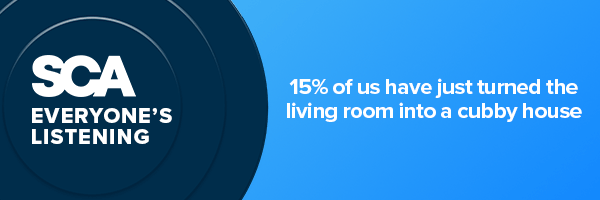ARN shareholders have been delivered some sobering, though not unexpected, news at the 2020 HT&E AGM being held online this morning.
Q1 results for this year were down by 7.2%, though the network outperformed the broader radio market that was down by 12.4%.
The Q2 bookings have been severely affected by COVID-19, with April revenue declining by over 40% with Direct Clients, and forward May bookings look to be similar.
Because this revenue normally comprises of approximately 30% of total revenues the bottom line has been particularly affected.
Despite this, ARN is in a very strong position to ride out the current crisis with a number of speakers at the AGM commenting on the company on the fact that the company had not made any redundancies during the current pandemic.
Chairman of HT&E Hamish McLennan told the AGM: “HT&E is in a very strong and stable position during these unprecedented times and thanks to a number of strategic steps taken last year, our business is one of the better placed media companies in Australia currently facing this crisis.
“Today HT&E has one of the strongest balance sheets in Australia media. While some businesses are struggling with their capital structures, the company has $111 million net cash at the end of 2019, no undrawn debt and a radio business delivering strong cash conversion.”
Overall for HT&E in 2019, group EBITDA from continuing operations increased by $3.8 million to $75.6 million due to the impact of the new lease accounting standard AASB 16 Leases. Ignoring the effect of AASB 16, EBITDA would have been down 17% to $59.9 million.
Group revenue from continuing operations decreased $19.1 million to $253 million on last year, with both ARN and Cody Outdoor experiencing declines.
EBIT and NPAT were down 15% and 7% respectfully, while underlying EPS grew 1% thanks to the accretive nature of the current share buyback.
The strength of their balance sheet and cash generating assets means that they increased the payout ratio in 2019 to 70% with a fully franked full year dividend of 8.6 cents per share.
ARN noted that radio consumption is growing with radio listeners spending longer listening over the past few week, up over 1 hour 30 minutes longer per week compared to the weeks prior to the lockdown.
While the expected share of listening in cars is down by 13.2% the amount of time listening at home has increased by 17.8%, or just over 4 hours.
The TSL for Breakfast and Drive programs is up by 20 minutes and 18 minutes respectively.
CEO of HT&E Ciaran Davis said “radio consumption is growing and we have been on the front foot informing the market of the reality that radio listeners are spending more time listening …. over 1 hour 30 minutes longer per week compared to the weeks prior to the lockdown.
“The performance of the iHeartRadio platform has been particularly impressive recording its best month ever in March. Active users grew 24% to 1.2m and the number of new registrations is running at approx. 1,200 per day. We recorded over 3m listening hours to ARN stations in the month which is a lead indicator for us confirming that the cross promotion activity we carry out between our FM brands and iHeartRadio is driving people to listen more on the platform..”
iHeartRadio has recorded its best ever result in March, with Active users up by 24% to 1.2 million.
The iHeart Podcast Network Australia was launched in February and immediately became the Number 1 podcast network publisher in the country with 40 million impressions.
Subscribe to the radioinfo daily flash briefing podcast on these platforms: Acast, Apple iTunes Podcasts, Podtail, Spotify, Google Podcasts, TuneIn, or wherever you get your podcasts.




